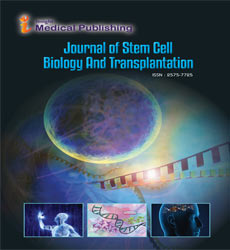ISSN : 2575-7725
Journal of Stem Cell Biology and Transplantation
Anthocyanin as a remedy against Hexaconazole 5% SC-induced toxicity in Channa punctatus
Abstract
Anthocyanin is a phenolic compound induce purple colour in different crops. It has antidiabetic, anticancer, antiinflammatory, antimicrobial, and anti-obesity effects, as well as preventive of cardiovascular diseases. Therefore, anthocyanins extracted from edible plants are potential pharmaceutical ingredients used against treatment of such ailments not only in humans but in aquatic organisms also. Agrochemicals on the other hand, after absorption, leaching and adsorption enters into the aquatic body producing severe toxication. Long term chronic toxicity (30, 60 and 90 days) was studied in Channa punctatus against the fungicide Hexaconazole 5% SC. The investigation involves changes expressed in biochemical, haematological and histological parameters.Intravenal administration of anthocyanin at a dose of 5mg/ml caused significant remedial feature in the non-target organism. The anthocyanin biosynthesic gene has been isolated from purple fleshed sweet potato. In the next phase of experiment it is being incorporated in non-anthocyanin producing crop which may be used as fish feed.
Open Access Journals
- Aquaculture & Veterinary Science
- Chemistry & Chemical Sciences
- Clinical Sciences
- Engineering
- General Science
- Genetics & Molecular Biology
- Health Care & Nursing
- Immunology & Microbiology
- Materials Science
- Mathematics & Physics
- Medical Sciences
- Neurology & Psychiatry
- Oncology & Cancer Science
- Pharmaceutical Sciences
